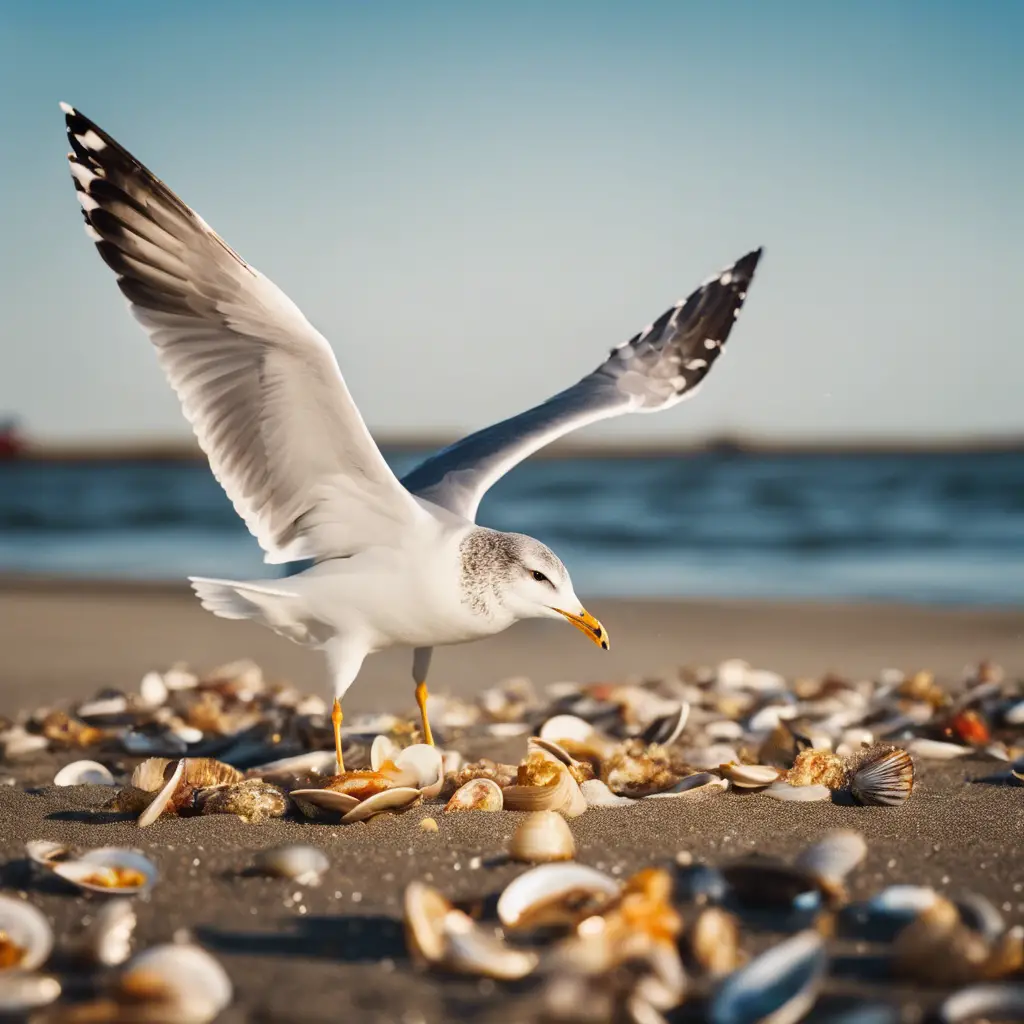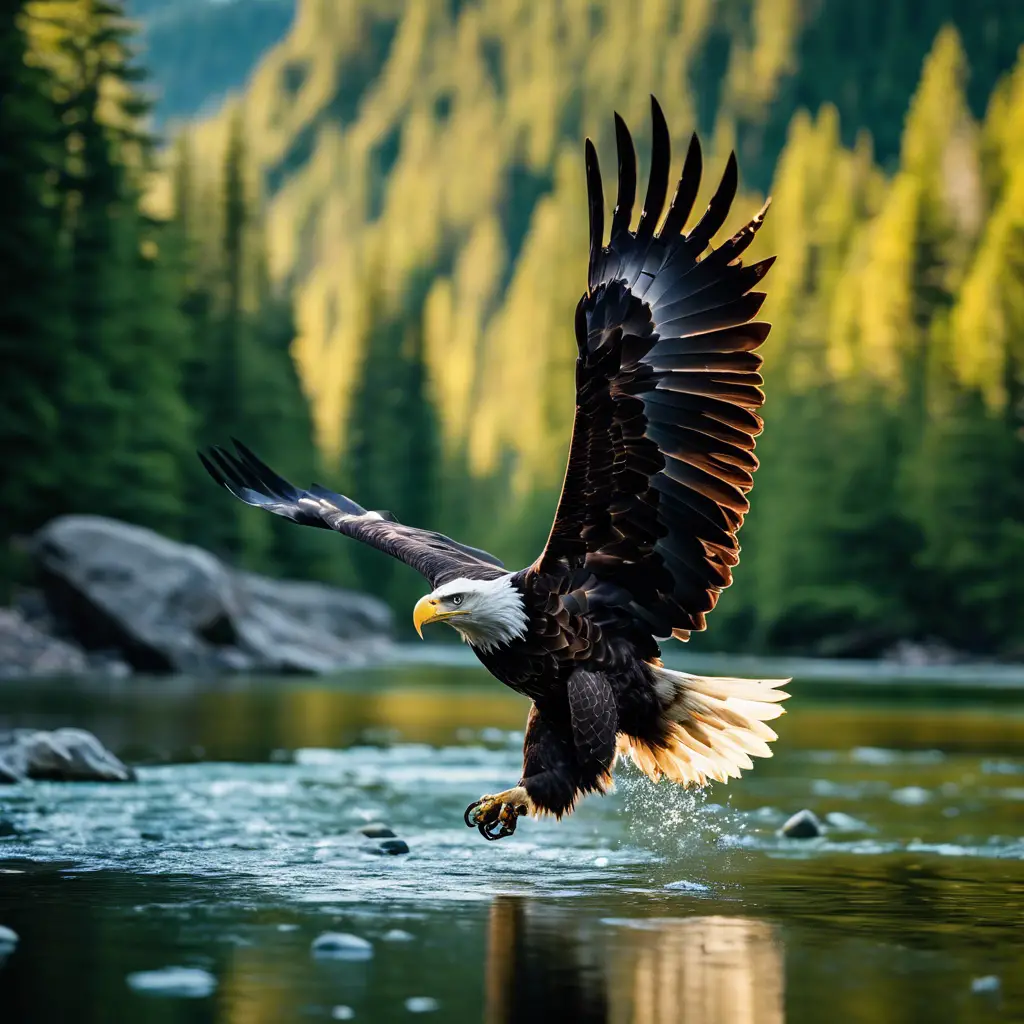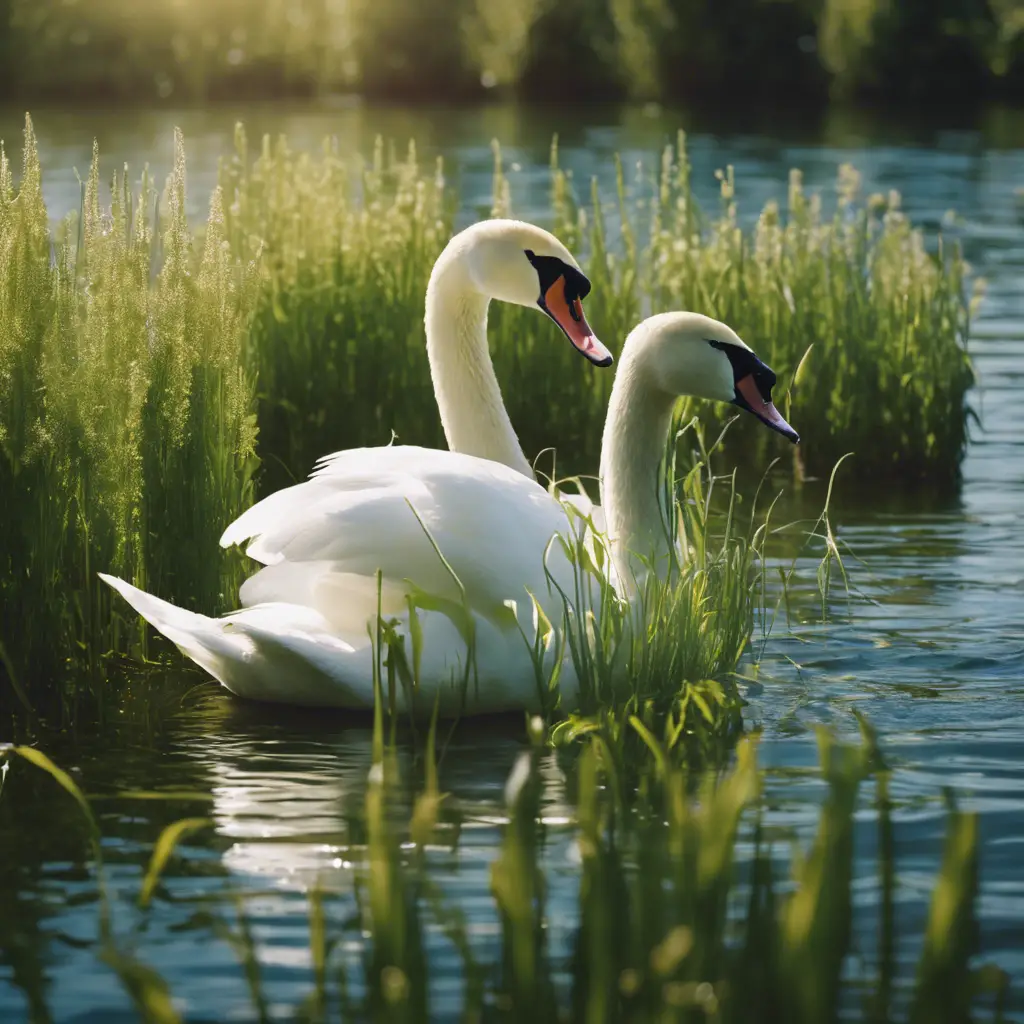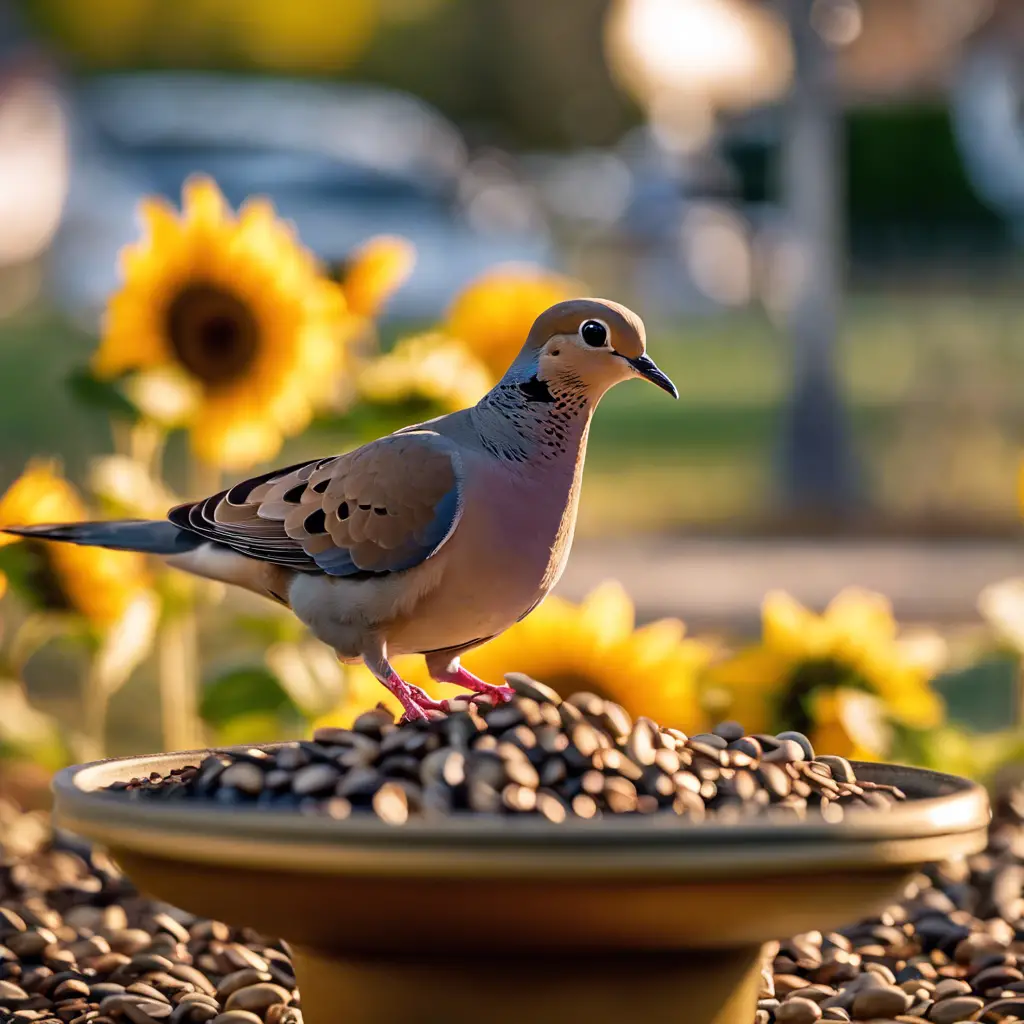In my experience, studying the dietary habits of seagulls has been enlightening. As an avian ecologist, I’ve spent countless hours observing their opportunistic feeding strategies. I believe that their adaptability is remarkable.
Once, while researching coastal ecosystems, I witnessed a seagull deftly catch a fish mid-leap. Another time, I saw a gull cleverly extract a discarded pizza slice from a bin. These encounters underscored their diverse palate and survival skills.
From my expertise, I’ve learned that while it’s fascinating to observe these birds, it’s crucial to avoid feeding them, as it disrupts their natural foraging behaviors.
Key Takeaways
- Seagulls have a diverse diet that includes freshly caught fish, crabs, mollusks, insects, small rodents, worms, seeds, and fruits.
- They adapt their diet based on the seasons and habitat, shifting to more land-based fare during winter.
- Seagulls employ various foraging techniques, such as diving for fish, picking through seaweed for crabs, scavenging in parking lots and garbage bins, and raiding nests for bird eggs.
- Feeding seagulls human food can be harmful to their health, contributing to obesity and malnutrition.
Seagulls’ Varied Diet
You’ll often find seagulls snatching up a diverse array of foods, from freshly caught fish to discarded human snacks. These birds aren’t picky; they thrive on versatility.
Seagulls eat with gusto, whether it’s small fish darting through shallow waters or a crusty piece of bread tossed aside at the boardwalk. Their diet swings with the seasons and their current habitat.
Along the coast, you might see them dive for crabs or mollusks, demonstrating their prowess as hunters. Inland, they’re just as likely to nab insects or chase down a small rodent.
Regardless of the meal, seagulls are resourceful eaters, making the most of the resources available, ensuring their survival in a world teeming with competition.
Coastal Feeding Habits
Many seagulls along coastlines eat a significant amount of seafood, including fish, crabs, and mollusks, showcasing their expert hunting abilities. You’ll often see them skimming the surface of the water, gracefully dipping their beaks to snatch fish, and hovering before diving with precision. They also prowl the shoreline, picking through seaweed for crabs, and investigating rock pools for hidden treats. In addition, they take to the air and drop shellfish from heights to crack them open. They are constantly scanning for schools of fish from above.
Seagulls have honed their skills to adapt to the environment. Whether it’s seizing fish right from the water’s surface or gobbling up what the tide leaves behind, seagulls are the ultimate coastal opportunists.
Winter Dietary Changes
As winter sets in, you’ll notice seagulls shift their diet to include more land-based fare like insects and fruits, adapting to the scarcity of their usual seafood. During these colder months, they’ll also munch on worms and seeds, or any human leftovers they can scavenge, ensuring they exploit diverse food sources. Some species head inland, scouring farmers’ fields and picking through rubbish to sustain themselves.
The winter months compel seagulls to switch up their menu further, targeting nutritious small fish or fry to support breeding needs. They might even prey on small mammals if the opportunity arises. Keep an eye out for winter visitors like the Bonaparte’s gull and Ring-billed gull, who join the coast’s local population, diversifying the seagull scene and their dietary dynamics.
Inland Foraging Strategies
When you’re observing seagulls away from the coastline, you’ll notice they employ a range of foraging strategies to find food, such as scavenging in fields and exploiting human waste. Adaptable and opportunistic, seagulls thrive in a variety of environments, including:
- Parking lots:
- Picking through discarded fast-food containers
- Swooping down for spilled snacks
- Farmlands:
- Foraging for grains and seeds post-harvest
- Raiding nests for bird eggs
- Urban areas:
- Scavenging from overflowing garbage bins
- Feasting on insects attracted to streetlights
These tactics not only show their versatility but also how they’ve learned to coexist with human activity. Whether it’s insects, small rodents, or leftovers, seagulls find sustenance well beyond the shore.
Juvenile Seagull Nutrition
Transitioning from foraging tactics, you’ll find that juvenile seagulls receive a diet rich in nutrients, tailored to their rapid growth and developmental needs. Parents carefully select food, ensuring their chicks eat small fish and other soft, easily digestible items. Unlike the adults, these young birds are not yet scavenging the shores for random scraps. Instead, they rely on their parents to provide them with a strong nutritional foundation.
Here’s a glimpse of what juvenile seagull nutrition looks like:
| Food Type | Benefit |
|---|---|
| Regurgitated Fish | High in protein; easy to eat |
| Shorebird Eggs | Nutrient-dense; quick energy |
| Baby Least Terns | Rich in fats; promotes growth |
| Fry | Small, nutrient-packed seafood |
The diet of juvenile seagulls is meticulously curated to support their dynamic journey to adulthood.
Insect Consumption Patterns
You’ll notice that as juvenile seagulls mature, their dietary preferences expand to include a variety of insects, from beetles to flies, which provide essential nutrients for their continued growth. These small creatures are more than just a snack; they’re a fundamental part of the seagull’s diet, reinforcing their adaptability and survival.
- Hunting Tactics
- Swooping down to snatch a beetle scurrying across the sand.
- Gracefully plucking flies from the air in a mid-flight feast.
- Picking earthworms from the soil after a rain shower.
Seagulls don’t just eat these insects; they rely on them. They’re an essential source of protein and energy, helping seagulls maintain their strength and vitality. Whether in the air or on the ground, seagulls are always on the lookout for their next insect meal.
Human Food Interaction
As a beachgoer, your picnic might attract seagulls, notorious for their scavenging behavior and appetite for human-provided snacks. These birds have become experts at snatching up any human food left unguarded. You might’ve noticed seagulls gobbling down organic chips or pecking at un-spiced spaghetti offered by fellow beach lovers. They’re even known to enjoy the occasional regular Cheerio or unsalted sunflower seed.
But be cautious, feeding them too much can lead to unwanted waste dropping from above, especially around hotels and campsites. And remember, seagulls aren’t shy about showing appreciation; they’ve been known to remember and act chummy towards those who regularly share their meals. Feeding them may seem harmless, but it’s best to be mindful of the consequences.
Fishing Techniques Revealed
Watch how seagulls masterfully snatch fish from the water’s surface with swift, calculated dives. These birds aren’t just scavengers; they’re adept hunters, especially when it comes to their favorite—fish. With fishing techniques revealed, you’ll appreciate the precision of their hunting methods:
- Hovering and Scanning
- Soaring high, eyes piercing the water
- Swift shadows over shimmering waves
- Precision Diving
- Wings tucked, they plunge
- A splash, then triumphantly surfacing with prey
- Opportunistic Feeding
- Patrolling the shoreline, alert and ready
- Snatching up the unwary fish near the surface
As gulls eat fish, they showcase their role in the ecosystem, controlling small prey populations and keeping the environment clean. Their varied diet and resourceful nature make them fascinating to observe.
Harmful Foods to Avoid
While seagulls are skilled hunters, it’s crucial that you don’t feed them harmful foods that can damage their health.
Foods to avoid include white bread and sugary cereals, which offer empty calories without essential nutrients. Not only do these items lack nutritional value, but they can also lead to malnutrition.
Similarly, you should never offer seagulls spicy or heavily seasoned food. Such items can disrupt their digestion, causing discomfort and potential health issues.
Moreover, fried foods like chips are especially bad; they’re high in unhealthy fats and could contribute to obesity in seagulls.
Frequently Asked Questions
Will Seagulls Eat Squirrels?
You might be surprised, but seagulls can eat squirrels if they’re available, especially when other food is scarce. Their diet is quite varied, adapting to whatever the environment offers.
What Will Attract Seagulls?
You’ll attract seagulls with open garbage bins, scattered food, or by feeding them directly. They’re drawn to areas where human activity provides easy meals, like beaches, parks, and outdoor eating spaces.
Is Seagull a Predator or Prey?
Seagulls are predators, hunting fish and insects, but they’re also prey for larger birds and animals. They’re opportunistic, feeding on various foods, and play a key role in the ecosystem.
Conclusion
In conclusion,
you’ve seen that seagulls are versatile eaters, thriving on a mix of seafood, insects, and even our leftovers. They switch up their diets with the seasons and location, ensuring they always have a meal.
It’s up to you to help keep their habitats clean and their food safe,
steering clear of offering harmful foods. By protecting their environment,
you’re safeguarding these adaptable birds for future generations to marvel at their survival skills.

An avid ornithologist, zoologist and biologist with an unwavering passion for birds and wild animals.
Dr. Wilson’s journey in ornithology began in childhood and led him to obtain a Ph.D. in Ornithology from the prestigious Avian Research Institute. He has worked closely with renowned experts in the field and conducted extensive research and field studies globally.





